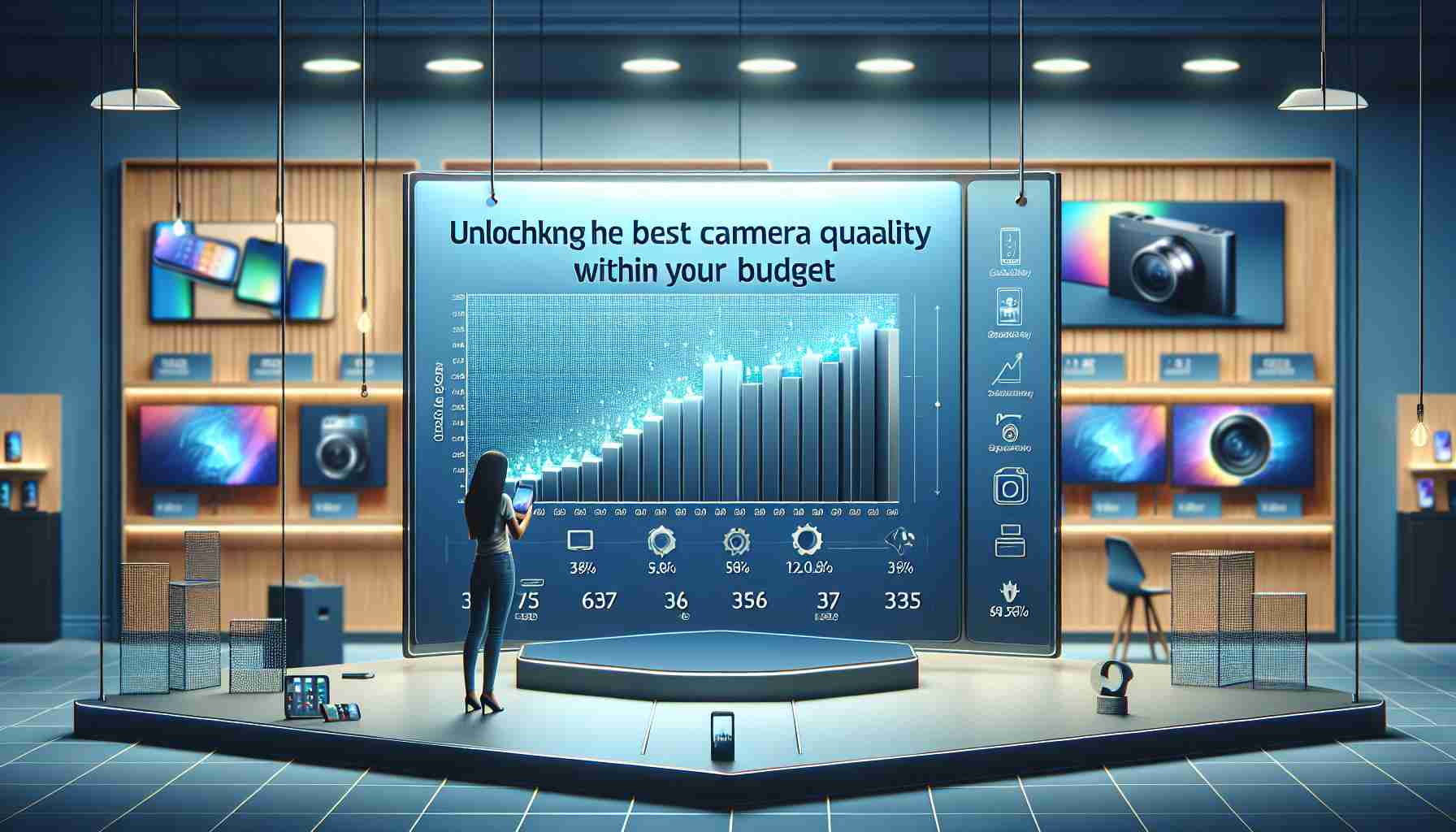As the smartphone has cemented its role as a primary camera for many, discerning buyers are increasingly looking to strike the right balance between camera proficiency and pricing. In the quest for value, not all phones with steep price tags deliver unparalleled camera quality.
Assisting buyers in making wiser decisions, an innovative interactive scatter plot now illustrates a clear picture of the price versus camera quality landscape. Analyzing data from DXOMARK, a leader in evaluating camera performance, this tool is equipped with a trend line that highlights the correlation between cost increments and camera improvements.
By observing this scatter plot, purchasers can pinpoint where each smartphone stands in terms of value for money. Mapping price and quality, the vertical axis highlights superior camera features while the horizontal axis aligns with more economical choices. If a phone resides below the trend line, this might suggest a comparatively less attractive camera performance considering its price.
However, shoppers should be mindful that the plot is based on global launch prices and exclusively assesses camera quality using DXOMARK scores. Therefore, the tool does not cover the whole spectrum of a smartphone’s capabilities such as screen resolution, processing efficiency or battery life.
Important considerations when evaluating your next smartphone camera include real-world feedback from current users, the device’s capacity to deal with varied lighting, and extra camera functionalities that can make a difference. Moreover, it’s essential to understand that no single tool can provide a complete story; a visit to comprehensive tech platforms like DXOMARK, The Verge, and CNET can offer a more rounded insight into the latest smartphone offerings and their diverse features. Remember, while the camera may be pivotal, other factors equally contribute to the ultimate user experience.
Questions and Answers:
Q: What factors should be considered when purchasing a smartphone for its camera quality?
A: When buying a smartphone for its camera quality, consider not only DXOMARK scores but also user reviews, camera features like zoom capability and low-light performance, as well as the smartphone’s overall performance including screen resolution, processor speed, and battery life.
Q: Why can’t DXOMARK scores alone determine the best smartphone camera?
A: DXOMARK scores primarily focus on camera performance, but they don’t account for personal preferences, budget constraints, and other device features which may be equally important to the user. Other aspects of a smartphone, such as user interface, durability, and brand reputation, also play a significant role in the overall satisfaction with a device.
Q: Should price be the only determining factor in judging camera quality on smartphones?
A: No, price shouldn’t be the sole factor. Sometimes, mid-range smartphones can offer excellent camera quality that rivals or exceeds that of more expensive models. It’s essential to analyze performance tests, compare features, and read reviews to assess value for money.
Key Challenges and Controversies:
One key challenge in identifying the best camera quality within a budget is the subjective nature of image quality. What one person considers a crisp, vibrant photo, another might see as oversaturated or unnatural. Manufacturers often prioritize different aspects of camera performance, leading to variations that can’t be distilled into a single score.
Another controversy is the potential bias in review scores. Some critics argue that certain brands could be favored, either deliberately or subconsciously, which may distort consumers’ understanding of true camera performance.
Advantages and Disadvantages:
Advantages:
– The interactive chart simplifies the data, allowing consumers to visualize price-to-performance ratios easily.
– It uses scores from DXOMARK, a reputable source for camera performance evaluation.
– The trend line can help identify which smartphones offer better value in terms of camera capabilities.
Disadvantages:
– The chart only considers camera performance according to DXOMARK scores and global launch prices, not accounting for price changes or promotions.
– It does not take into account the full range of features that might influence a buyer’s decision.
– The reliance on a single source of data may limit perspectives, as different reviewers could yield varying insights.
For further information about smartphone camera quality and other technology insights, people often refer to reliable tech news platforms such as DXOMARK, The Verge, and CNET. These platforms offer extensive reviews, comparisons, and discussions that can help consumers make well-informed purchasing decisions.
The source of the article is from the blog guambia.com.uy
